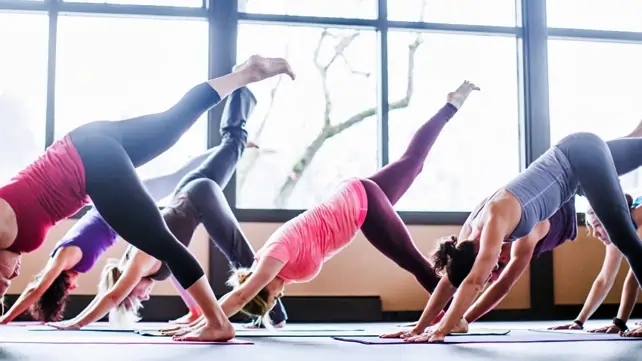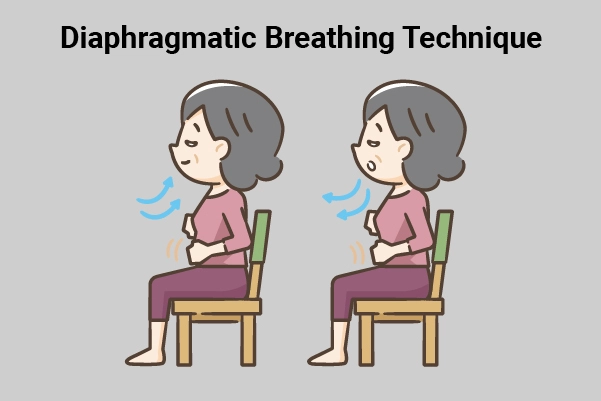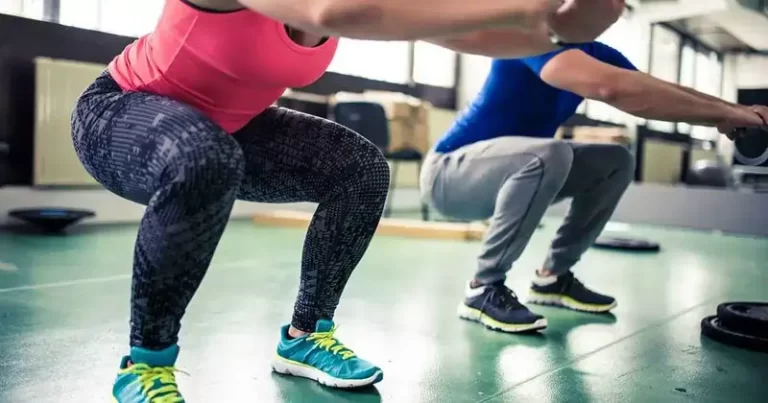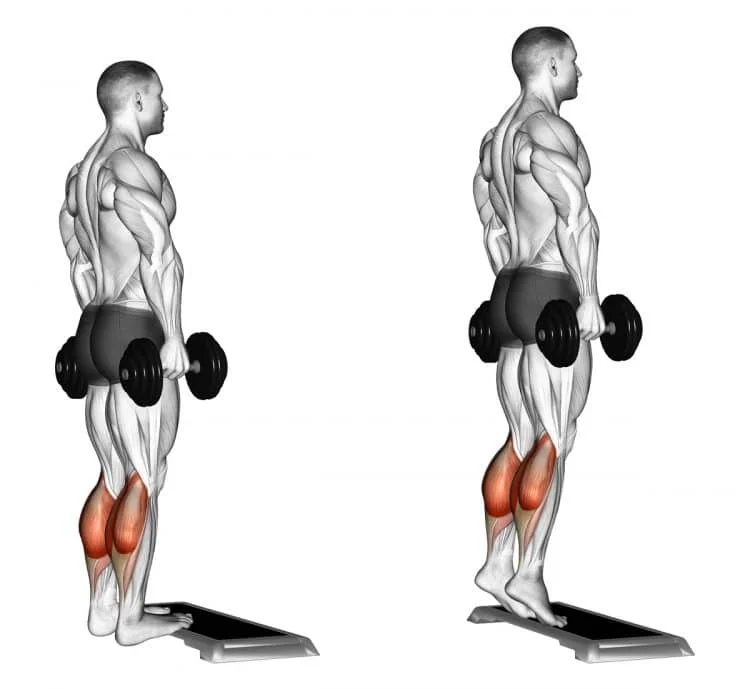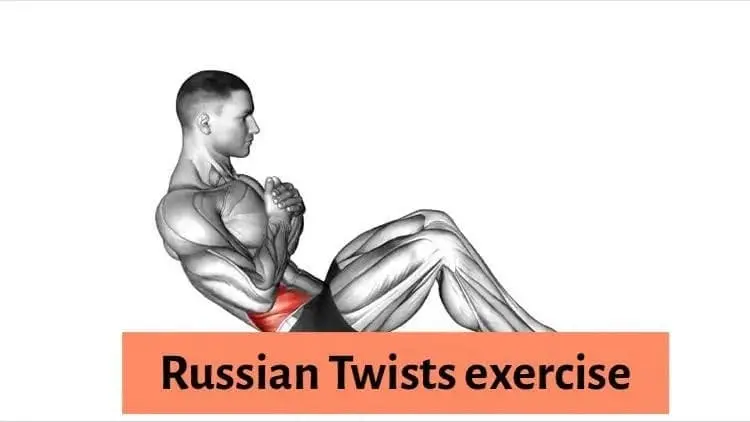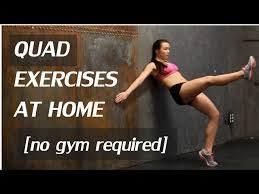Ballistic Stretching
Introduction
Being flexible is an important aspect of general fitness. It explains the range of motion your muscles and joints may have without causing pain. In addition to lowering the chance of injury and improving posture, flexibility allows for common motions like reaching, twisting, and bending.
Stretching may be done in various ways to increase flexibility. Static stretching, which involves maintaining a stretch in a single posture, dynamic stretching, which involves controlled movements over a range of motion, PNF stretching, which combines stretching and contracting muscles, and ballistic stretching are a few popular techniques.
Ballistic stretching, which uses rapid, bouncing motions to push your body over its typical boundaries, will be the topic of this article. It’s frequently misunderstood and seen as dangerous, yet when done properly and under the appropriate circumstances, it can have special advantages. We’ll define ballistic stretching accurately, examine its advantages and disadvantages, and offer advice on safe technique.
Ballistic stretching: what is it?
Using fast, bouncing motions to push a muscle beyond its normal range of motion is known as ballistic stretching. Ballistic stretching uses momentum rather than controlled movement, as in dynamic stretching, or holding a stretch softly, as in static stretching. A famous example of ballistic stretching is when someone bounces up and down while attempting to touch their toes.
Athletes or those participating in sports like basketball, martial arts, or track and field that call for explosive movements frequently employ this approach. The objective is to progressively build muscular strength through rapid, repeated actions.
How it Differs from Other Techniques of Stretching:
In static stretching, a stretch is progressively increased and maintained for a certain amount of time, usually 15 to 60 seconds. No bouncing or movement is required. It’s relaxing, well-managed, and excellent for promoting long-term flexibility or cooling down.
Arm circles and leg swings are examples of dynamic stretching, which involves continuously and carefully moving body parts through their full range of motion. In contrast to ballistic stretching, these motions are not jerky or violent.
Ballistic Stretching: Ballistic stretching, on the other hand, is quick and involves jumping into a stretch, which might cause the body to go beyond its comfort zone. Although this additional force might increase flexibility, improper use increases the risk of damage.
Benefits of Ballistic Stretching
Ballistic stretching has specific, unique benefits, particularly for athletes and those who are very active, despite its negative image as dangerous. This kind of stretching may be a crucial part of an exercise program if done correctly and by those who are already flexible and well-conditioned.
Sports requiring explosive force and speed frequently employ ballistic stretching. The type of flexibility and muscular activation that this stretching offers is beneficial to athletes participating in karate, gymnastics, sprinting, and other associated sports.
It can help prepare the body for comparable motions during competition or hard training since it replicates the quick, powerful movements used in these sports.
Increases range of motion and flexibility
The primary objective of ballistic stretching is to force the muscles to work beyond their typical limitations. Over time, the rapid, bouncing motions can aid in improving flexibility, particularly in regions that are already quite flexible. Increased range of motion might result from this, which is important for several sports and physical activities.
Perfect for Athletes with High Performance
Sports requiring explosive force and speed frequently employ ballistic stretching. The type of flexibility and muscular activation that this stretching offers is beneficial to athletes participating in karate, gymnastics, sprinting, and other associated sports. It can help prepare the body for comparable motions during competition or hard training since it replicates the quick, powerful movements used in these sports
Prepares Muscles for Quick, Powerful Movement
Gets Muscles Ready for Forceful, Fast Motions: Ballistic stretching can assist in conditioning the muscles and joints for forceful, rapid motions if done properly and following a warm-up. It is helpful in some warm-up exercises for seasoned athletes since it helps “wake up” the neural system and prepare the body for high-intensity action.
Risks and Precautions of Ballistic Stretching
Despite its advantages, ballistic stretching has some significant risks, particularly if done improperly or without the right preparation. It can be more severe than other forms of stretching because it involves quick, bouncing motions to push the muscles beyond their typical range.
Increased Injury Risk
Ballistic stretching raises the risk of muscular tension, pulls, and even tears, which is the main cause for concern. Muscles that aren’t prepared for the bouncing action may extend too soon or too much, which might result in damage.
Not Suitable for Everybody
Beginners, senior citizens, and those with low flexibility shouldn’t try ballistic stretching. The quick and violent moves may cause more harm than benefit for these communities. Instead, gentle techniques like static or dynamic stretching are usually more effective and safe.
Required to Complete a Proper Warm-Up
Using cold muscles for ballistic stretches is a certain way to be injured. It’s crucial to warm up properly first—using mild cardio or dynamic stretches—to get blood circulating and prepare the body for the demands of ballistic action.
Needs Control and Proper Form
To reduce your risk of injury, it’s critical to use proper technique and pay attention to your body. Ballistic stretching should never be uncomfortable. It indicates that you’re pressing too hard or doing it wrong if it feels painful or sharp.
How to Do Ballistic Stretching Safely: Technique & Sample Exercises
If done carefully and with the right technique, ballistic stretching can assist flexibility and prepare for strong motions. Using rapid, bouncing motions to stretch muscles without straining or injuring them is the aim.
Always start by warming up
Make sure your body is ready before considering ballistic stretching.
The ideal warm-up is five to ten minutes of mild cardiovascular exercise, such as cycling, running, brisk walking, or jumping jacks.
To get your muscles and joints ready for the quicker motions of ballistic stretches, do dynamic stretching after this.
Ballistic Stretching Examples
These are some typical ballistic stretch examples. You should only do this if you already have a certain amount of control and flexibility.
Leg swings
- How to do it: For balance, stand close to a wall or other object. Safely and firmly swing one leg forth and back.
- Target: glutes, hips, and hamstrings.
- Reps: ten to fifteen swings per leg.
Arm circles
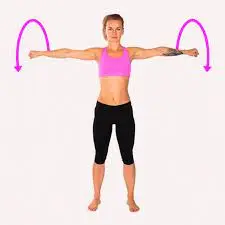
- Method: Reach your arms out to the sides and move them quickly in circles, starting small and getting bigger over time.
- Target: Arms and shoulders.
- Reps: forward for 15–20 seconds, then backward.
- Advice: Stay clear of jerks and maintain fluid motions.
Bouncing toe touches
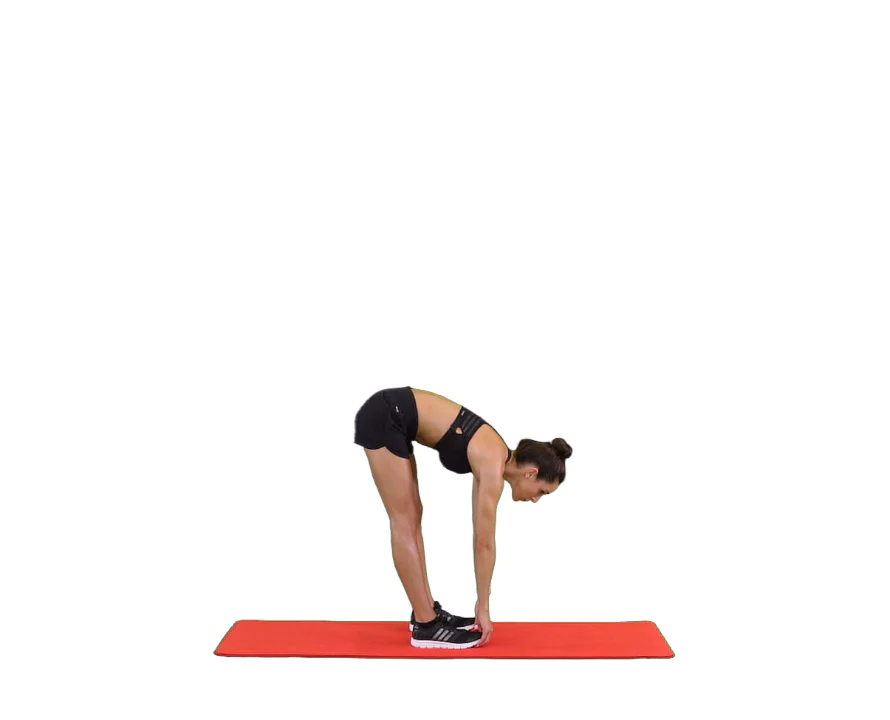
- How to do it:
- Keep your legs straight when standing.
- Reach down toward your toes after bouncing softly at the end of the exercise.
- Target: lower back and hamstrings. Each set consists of 10–12 bounces. Advice: Only bounce within a comfortable range; don’t push the stretch.
Deep Squat
- Position Yourself in a Deep Squat. Position yourself as shown in the picture. For balance, point your toes slightly outward. Maintaining your heels on the floor, slowly lower yourself into a deep squat as low as is comfortable. Place Your Hands in That Position
To gently move your knees toward the outside, put your elbows behind them. - For balance, stretch your hands forward or place them together in the Anjali Mudra, or prayer pose.
- Begin gently bouncing. To generate small and controlled bounces, raise and lower your hips a few inches from the bottom of the squat. Avoid standing up completely or bouncing with force; instead, keep your movements soft and rhythmic. Inhale and Keep Your Form
Back straight and your chest up. - Keep your knees in line with your toes and resist the urge to bend them inward.
- Breathe in and out as you naturally move. Reps and Duration: Do ten to fifteen light bounces in a single set.
Standing Lunge Bounces
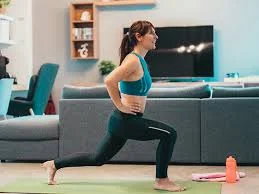
- Place your feet hip-width apart and stand tall. Maintaining your front knee exactly above your ankle, take a single step forward into a lunge. With the heel up and the knee slightly bent, stretch your rear leg behind you.
- Bend both knees slowly to begin a deep lunge. The core should be tight, and the back should be straight. The hip flexor in the back leg will be stretched.
- Start with small, controlled bounces from the bottom of the lunge, shifting your body only a few inches up and down. Avoid using too much power; instead, keep the bounce regular and light.
- With each light bounce, concentrate on progressively increasing the impact. Perform 10–15 side bounces.
Torso Twists
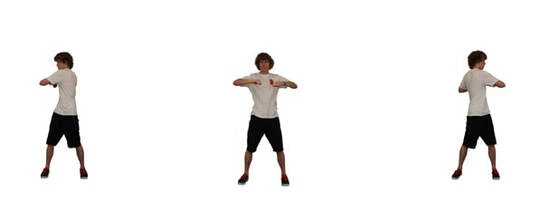
- Place your feet shoulder-width apart as you stand. Bend your knees a little and use your core.
- The choice between placing your hands on your hips or extending your arms straight out in front of you depends on your balance and degree of comfort.
- In a fast, bouncing action, begin rotating your torso from left to right.
- Either follow the motion or let your arms swing freely around your body.
- Maintain a forward-facing hip position and twist mostly from the waist.
- Avoid forcing the movement past your comfort level or overrotating.
- A gentle, rhythmic bounce is intended to improve core activation and spinal mobility.
- Do bouncing twists continuously for 15 to 30 seconds.
Bouncing into the splits
Depending on the level of flexibility you want, progressively lower yourself into either the middle splits (legs out to the sides) or the front splits (one leg forward, one behind). Don’t push yourself to find your deepest comfortable posture; instead, use your hands or yoga blocks for support.
- Use your hips to start light bounces downward when you’re steady.
- Movement should be minimal, no more than 1 to 2 inches.
- Instead of bouncing with jerky or strong power, bounce softly and regularly.
- Keep your core active and your posture upright.
- In front splits, the hips are squared, and in middle splits, the knees and toes are upward.
- After performing ten to fifteen soft bounces, stop and hold the stretch for five to ten seconds.
- Using your hands or blocks as support, slowly draw your legs back together.
- Before repeating (if necessary), shake out your legs and take a break.
- For this strenuous stretch, one to two sets are typically enough.
Ballistic Shoulder Rotations

- Stand as you can see in the picture.
- Extend your arms straight out in front of you or sideways.
- Maintain a relaxed posture with a slightly engaged core.
- Use a bouncing or whipping motion to begin moving your arms forward in short circles.
- Without losing control, progressively increase the circles’ size and speed.
- After 10–15 seconds, reverse the direction and do backward rotations.
- One arm at a time is an excellent way to isolate action and prevent shoulder conflict.
- Instead, try swinging your arms in a circle from front to overhead, then bouncing at the bottom before lowering them again.
- Spend 15 to 30 seconds in each direction (forward and backward).
Ballistic Stretching Alternatives
Ballistic stretching is useful in professional athletic training, but it’s not necessarily the best or safest approach, particularly for beginners. Thankfully, there are safer and more adaptable ways to increase your body’s flexibility and get it ready for exercise.
Although it’s not for everyone, ballistic stretching may be an effective technique for increasing flexibility and being ready for explosive motions. It is more dangerous than other forms of stretching because it uses quick, bouncing motions that force muscles beyond their typical range. This makes it useful in some sports situations.
Summary
Before exercising, dynamically stretch your muscles to warm them up. You may be able to relax and progressively improve your flexibility with static stretching. It is advisable to leave ballistic stretching to seasoned athletes who have warmed up properly.
It’s important to keep in mind that ballistic stretching isn’t always dangerous; it just needs the appropriate time, technique, and personal preparation. When executed properly, it might provide special advantages. If done intentionally, it may be harmful.
Consult a coach, physical therapist, or experienced trainer if you’re not sure if ballistic stretching is appropriate for your body type or level of fitness. The best and most secure way to increase your flexibility and performance is to adjust your strategy to your body’s requirements
FAQs
With whom should ballistic stretching be used?
It is usually utilized by seasoned dancers or athletes who require dynamic flexibility for their activity. People healing from injuries or casual exercisers shouldn’t use it.
Can flexibility be increased with ballistic stretching?
Yes, it can increase muscular elasticity and dynamic flexibility when done correctly, but the risk of damage is higher than with static or dynamic stretching.
When is the ideal time of day to perform ballistic stretches?
It should be utilized, if at all, following a thorough warm-up and ideally following other stretching exercises. It is most effective when used in sport-specific training rather than general fitness programs.
What are the risks of ballistic stretching?
Muscle strains or tears
Injury to tendons or joints
Overstretching leading to reduced performance or injury
What safety measures should I take before doing ballistic stretching?
Get well warmed up in advance.
First, begin with vigorous stretches.
Instead of making rapid motions, use controlled bouncing.
Avoid stretching if you’re hurt or inexperienced.
Think about collaborating with a trainer or coach.
References
- Hevy Coach. (2024, May 22). Ballistic Stretching: Definition, Examples, and uses – Hevy Coach. https://hevycoach.com/glossary/ballistic-stretching/
- pliability | What Is Ballistic Stretching? 12 Best Stretches and Safety Advice. (n.d.). https://pliability.com/stories/ballistic-stretching
- Coleman, S. (2025, April 26). What Is Ballistic Stretching (with 8 Examples) and Who Should Do It? SET FOR SET. https://www.setforset.com/blogs/news/ballistic-stretching?srsltid=AfmBOood2DdMl_Bquac3JodvZCafOzKhk92_CEcxYBzwZQVPO0nYTFOG
- Bronwen. (2022, August 18). What are ballistic stretches? | Trifocus Fitness Academy. Trifocus Fitness Academy. https://trifocusfitnessacademy.co.za/personal-fitness-training-blog/what-are-ballistic-stretches/
- Flex AI. (2024, September 23). Is ballistic stretching safe? Safety tips, pros, and cons. https://flexfitnessapp.com/blog/is-ballistic-stretching-safe/

